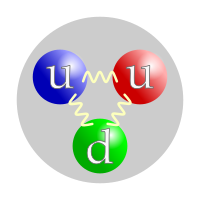
Protein-RNA complexation driven by the charge regulation mechanism.
Sign Up to like & getrecommendations! Published in 2018 at "Biochemical and biophysical research communications"
DOI: 10.1016/j.bbrc.2017.07.027
Abstract: Electrostatic interactions play a pivotal role in many (bio)molecular association processes. The molecular organization and function in biological systems are largely determined by these interactions from pure Coulombic contributions to more peculiar mesoscopic forces due… read more here.
Keywords: regulation mechanism; mechanism; complexation; charge regulation ... See more keywords

Insight into the effect of charge regulation on the binding mechanism of curcumin to myofibrillar protein.
Sign Up to like & getrecommendations! Published in 2021 at "Food chemistry"
DOI: 10.1016/j.foodchem.2021.129395
Abstract: Myofibrillar proteins (MPs), as a food-grade material, have the potential to improve the solubility and bioavailability of curcumin. However, the interaction mechanism between MPs and curcumin under charge regulation induced by alkaline pH and NaCl… read more here.
Keywords: protein; charge regulation; mechanism; curcumin ... See more keywords

Influence of Charge Regulation on the Performance of Shock Electrodialysis
Sign Up to like & getrecommendations! Published in 2023 at "Industrial & Engineering Chemistry Research"
DOI: 10.1021/acs.iecr.2c03874
Abstract: In order to understand the ion transport in a continuous cross-flow shock electrodialysis process better, numerous theoretical studies have been carried out. One major assumption involved in these models has been that of a constant… read more here.
Keywords: charge regulation; charge; shock electrodialysis;

Effect of Charge Regulation and Conformational Equilibria in the Stretching Properties of Weak Polyelectrolytes
Sign Up to like & getrecommendations! Published in 2019 at "Macromolecules"
DOI: 10.1021/acs.macromol.9b01160
Abstract: Weak polyelectrolytes can modulate their charge in response to external perturbations, such as changes in the pH, ionic strength (I), or electrostatic interactions with other charged species, a phenomenon known as charge regulation (CR). On… read more here.
Keywords: properties weak; stretching properties; charge; charge regulation ... See more keywords

Charge regulation of nonpolar colloids.
Sign Up to like & getrecommendations! Published in 2018 at "Soft matter"
DOI: 10.1039/c7sm01825h
Abstract: Individual colloids often carry a charge as a result of the dissociation (or adsorption) of weakly-ionized surface groups. The magnitude depends on the precise chemical environment surrounding a particle, which in a concentrated dispersion is… read more here.
Keywords: nonpolar colloids; regulation nonpolar; charge; packing fraction ... See more keywords

Hydrodynamic simulations of charge-regulation effects in colloidal suspensions.
Sign Up to like & getrecommendations! Published in 2018 at "Soft matter"
DOI: 10.1039/c8sm00579f
Abstract: Self-organization of charged soft matter is of crucial importance in biology. However, it is an extremely complex phenomenon due to dynamical couplings between the hydrodynamic flow, ions, and charges of soft matter. For colloidal suspensions,… read more here.
Keywords: colloidal suspensions; charge regulation; soft matter; regulation effects ... See more keywords

Curvature effects in charge-regulated lipid bilayers.
Sign Up to like & getrecommendations! Published in 2022 at "Soft matter"
DOI: 10.1039/d1sm01665b
Abstract: We formulate a theory of electrostatic interactions in lipid bilayer membranes where both monolayer leaflets contain dissociable moieties that are subject to charge regulation. We specifically investigate the coupling between membrane curvature and charge regulation… read more here.
Keywords: charge regulated; effects charge; regulated lipid; charge ... See more keywords

Role of Charge Regulation and Fluctuations in the Conformational and Mechanical Properties of Weak Flexible Polyelectrolytes
Sign Up to like & getrecommendations! Published in 2019 at "Polymers"
DOI: 10.3390/polym11121962
Abstract: This work addresses the role of charge regulation (CR) and the associated fluctuations in the conformational and mechanical properties of weak polyelectrolytes. Due to CR, changes in the pH-value modifies the average macromolecular charge and… read more here.
Keywords: conformational mechanical; charge; role charge; charge regulation ... See more keywords

Charge Regulation of Poly(acrylic acid) in Solutions of Non-Charged Polymer and Colloids
Sign Up to like & getrecommendations! Published in 2023 at "Polymers"
DOI: 10.3390/polym15051121
Abstract: Weak polyelectrolytes (WPEs) are responsive materials used as active charge regulators in a variety of applications, including controlled release and drug delivery in crowded bio-related and synthetic environments. In these environments, high concentrations of solvated… read more here.
Keywords: regulation poly; pva; acrylic acid; charge regulation ... See more keywords